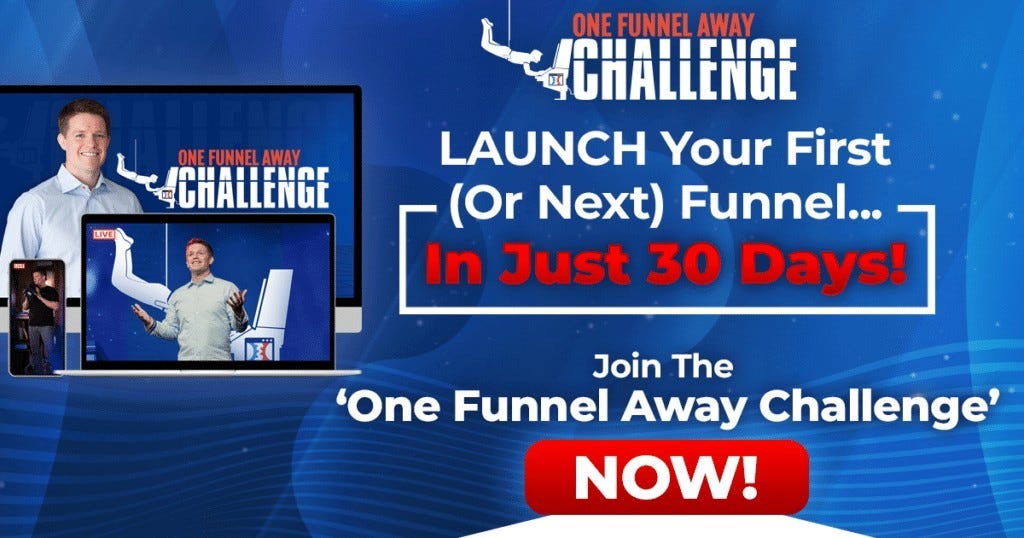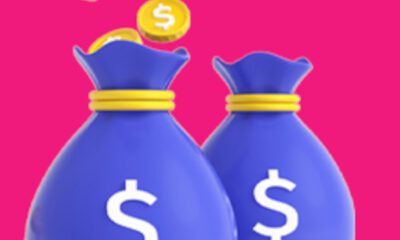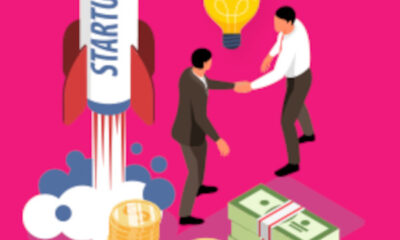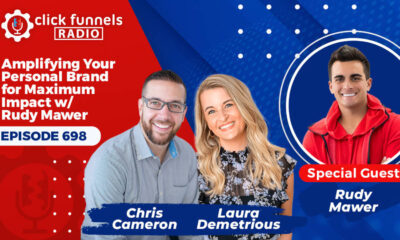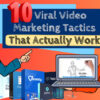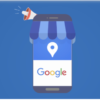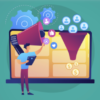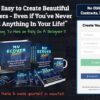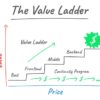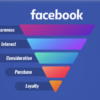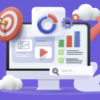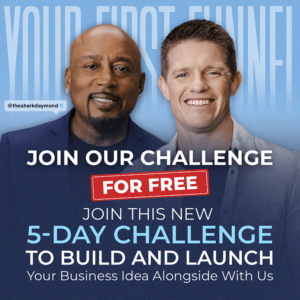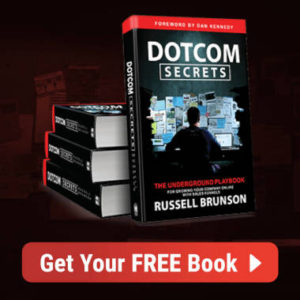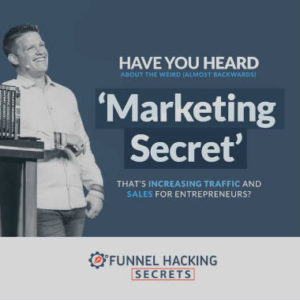Trainings
9 Steps To Create A Powerful Marketing Funnel
Paid advertising is the best way to get your online business started. It is a reliable and predictable way to grow your business. Advertising also can be scaled so that you can reach more people. However, it is important to make sure that you are getting a good return on investment for your ads. In order to do this, you need to create an advertising funnel. Today, we are going to show you how.
Step #1: Understand the Value Ladder Sales Funnel
We believe that the most effective way to sell anything online is the Value Ladder sales funnel.
It was created by our co-founder Russell Brunson who then used it to take ClickFunnels from zero to $10M+ in annual revenue in just one year (it’s at $100M+ now!).
This sales funnel has four stages:
- Bait. You offer the potential customer your lead magnet in exchange for their email address.
- Frontend. You offer the potential customer your least expensive and least valuable product or service.
- Middle. You offer the customer a more expensive and more valuable product or service.
- Backend. You offer the customer your most expensive and most valuable product or service.
Ideally, you also offer a continuity program of some sort, meaning, a subscription product that generates recurring revenue.
We also recommend adding downsells, upsells, and cross-sells to these core offers in order to maximize your revenue.

The reason why this sales funnel works so well is that it allows you to:
- Start the relationship with that person by offering free value.
- Nurture that relationship by continuing to provide free value via email.
- Build trust by providing progressively more paid value at each stage.
Here’s how Russell explains it:
We recommend using the Value Ladder sales funnel structure for your advertising funnel.
This is the hands-down absolute best thing you can do to increase your ad spend ROI.
Step #2: Choose the Value Ladder Sales Funnel Variation That is Right for You
There are many different types of sales funnels, but the Value Ladder funnel is one of the most effective. It can be adapted to fit your specific needs, so you should choose the one that works best for you.
Here are three popular Value Ladder sales funnel variations that you might want to consider:
Squeeze Page Funnel
A squeeze page is the most basic type of landing page.
Meanwhile, a squeeze page funnel is the most straightforward variation of the Value Ladder sales funnel, as well as the most popular one.
Here’s what it looks like:
- Page #1: Lead magnet squeeze page.
- Page #2: Thank you page with a lead magnet link + thank you video.

We recommend starting with a squeeze page funnel if you don’t have any previous funnel-building experience.
That being said, squeeze page funnels tend to be highly effective, so they aren’t just for funnel-building newbies – we use them all the time because they work so well.
Sometimes the simplest solution is the best solution!
Reverse Squeeze Page Funnel
A reverse squeeze page funnel is a more complicated variation of the Value Ladder sales funnel.
Just like the squeeze funnel, it only has these two pages:
- Page #1: Lead magnet squeeze page.
- Page #2: Thank you page with a lead magnet link + thank you video.

So what’s the difference between a regular squeeze page funnel and a reverse squeeze page funnel?
With a regular squeeze page funnel, you keep all the free value behind an opt-in wall. The potential customer needs to provide their email address in order to access it.
Meanwhile, with a reverse squeeze page funnel, you provide some free value on the squeeze page itself, no opt-in is required.
However, if the potential customer wants to access more of the free value that you are offering, they need to provide their email address.
Note that reverse squeeze page funnels typically feature video series as lead magnets.
For example:
If you’re a fitness influencer in the calisthenics space, you could create a free video course teaching basic calisthenics skills like push-ups, pull-ups, and hanging leg raises. You could display the introduction to your free course on your squeeze page. This video should provide value in and of itself – for example, you might discuss general calisthenics principles like progressions, programming, and recovery.
Then at the end of the video, you should encourage the potential customer to subscribe to your email list and get your free video course. The more value you provide in the squeeze page video, the more likely they will be to get your lead magnet. This funnel can work well if you are in an industry where video is the preferred medium (fitness, cooking, crafts, etc.).
Webinar Funnel
A webinar funnel is a variation of the Value Ladder sales funnel where you use a webinar as your lead magnet.
It has four pages:
- Page #1: Webinar registration page.
- Page #2: Thank you page.
- Page #3: Webinar event page.
- Page #4: Webinar replay page.

Note that the webinar can be either live or pre-recorded.
However, if you choose the latter option, please make sure that it is clear to the attendees that they are watching a recording. Otherwise, they might feel tricked once they realize that the event isn’t live, which will undermine your credibility and demolish the trust that you have built so far.
Also, while a webinar should provide value in and of itself, you should end it by pitching your front-end product.
We like this sales funnel because it is how Russell got ClickFunnels off the ground in its first year. He did 5-7 webinars every week. Sometimes he would do 2-3 webinars in a single day. And it worked! In fact, to this day, Russell is convinced that the best business model in the world is to create a webinar selling your product or service and then do that webinar live every single week for an entire year.
And you don’t even have to go all out as he did – a live webinar once a week, every week, for a year is enough.
Try it and see what happens!
You won’t regret it! 😉
Step #3: Create a Super Valuable Lead Magnet
A lead magnet is a freebie that you offer to potential customers in exchange for their email addresses.
It can be anything that they can either download to their device or access online:
- A report.
- An ebook.
- A webinar.
- A video class.
- A video course.
- An email course.
…etc.
What matters is that:
- Your lead magnet offers a solution to a problem that the potential customer is struggling with.
- That problem is either the same one or related to the problem that your frontend offer addresses. We will talk about this in more detail in the “Step #5: Create an Irresistible Frontend Offer” section.
As we always emphasize when discussing lead magnets:
You need to understand that the potential customer won’t give you their email address unless you offer something super valuable in return.
That’s why the key to designing an effective lead magnet is to create something that your dream customers desperately want…
And then give it to them for free!

Step #4: Create a Landing Page for Your Lead Magnet
Your lead magnet needs its own separate landing page that will serve as an entryway into your sales funnel.
It doesn’t have to be complicated – a simple squeeze page will do.
It should have these three key elements:
- A headline that conveys what your free offer is all about.
- An opt-in form where the potential customer can type in their email address. It can either be shown immediately or displayed once the potential customer clicks the call-to-action button.
- A call-to-action button that encourages the potential customer to get the lead magnet.
You might also want to experiment with various additional elements such as subheadlines, copy, social proof, etc.
Here’s a simple, yet highly effective squeeze page that we use for our “The Funnel Hacker’s Cookbook” lead magnet:

Step #5: Create an Irresistible Frontend Offer
The purpose of the frontend offer isn’t to make you loads of money, it’s to convert leads into paying customers.
That’s why we recommend creating a separate product that is designed specifically for that instead of simply using one of your existing products.
Ideally, there should be a logical progression from the lead magnet to your frontend product, so that the former would serve as a free sample of the value that the latter provides.
For example:
Matthew Hussey, a world-renowned dating coach, has a lead magnet called “9 Magic Texts That No Man Can Resist”.
This guide offers nine text message scripts that women can copy-paste when texting the guys they like.

Meanwhile, his frontend product is a guide called “The Momentum Texts” which offers 67 more text message scripts.

See how there’s a seamless progression from the “9 Magic Texts That No Man Can Resist” lead magnet to “The Momentum Texts” frontend offer?
You want the same in your sales funnels.
Also, typically, price is the greatest obstacle to buying a product, which is why we recommend pricing your frontend offer at $7.
That way:
- The price isn’t low enough to make the potential customer skeptical of the product’s value.
- The price isn’t high enough to make the potential customer stop and think twice before making the purchase.
Guess how much “The Momentum Texts” costs?

Offering a money-back guarantee can encourage people to buy your product. This is because they know that if they are not satisfied with the product, they can get their money back. You can choose to have a 30, 60, or even 90 day guarantee. This will remove any financial risk from the purchase decision for the potential customer, which means that they have nothing to lose by checking out your product.
If you are worried about getting overwhelmed with refund requests, don’t be. Typically, only a small percentage of customers ask for refunds on info products, especially ones that cost $7. That being said, giving people the option to ask for a refund also serves as a valuable way to get market feedback – if you are getting a lot of refund requests, you probably need to improve the quality of your product.
If your frontend product is not good, people will not want to buy your middle product. People will only buy a product if they trust the company that made the product. You must exceed people’s expectations at each stage of the sales funnel in order to build trust.
Step #6: Create a Sales Page For Your Frontend Offer
Your front-end offer needs a sales page.
Sales page copywriting is a huge subject, so it’s impossible to cover everything that you need to know in this short section.
That being said, the most important copywriting principle that you need to understand is the distinction between features and benefits:
- A feature is a function or a quality of the product (e.g. “These shoes are waterproof!”).
- A benefit is the value that the customer will derive from that product (e.g. “These shoes will keep your feet dry!”).
People buy based on benefits, not features.
As the old copywriter saying goes, “Features tell, benefits sell”.
That’s why you should emphasize benefits all throughout your sales copy. How will your product make the customer’s life better? Focus on that.
Here are a few more tips:
- Make sure that your headline conveys the main benefit of your product.
- Provide as much social proof as you possibly can. Share relevant credentials, accomplishments, numbers, etc. Display endorsements, customer testimonials, and “As Seen On Badges”.
- Have a clear call to action. Your call-to-action button should be impossible to miss – you want it to stand out in the overall color scheme of the page. And don’t leave the potential customer wondering what to do next. Tell them what you want them to do!
How long should your sales page be?
In general, the more affordable the product, the shorter the sales page.
So if you have followed our advice and priced your frontend offer at $7, you should probably go with a short-form sales page since a long-form one would be overkill.
Also, if you want to learn more about copywriting, you should check out Jim Edwards’book “Copywriting Secrets”.
You can get a physical copy for FREE – all Jim asks is that you cover the shipping.

GET COPYWRITING SECRETS FOR FREE!
Step #7: Set up a 6-Email ”Indoctrination” Sequence
We don’t advise hitting the potential customer with the sales pitch the moment they give you their email address.
Send them this email sequence instead:
- Email #1: Who are you? Introduce yourself to your new subscriber.
- Email #2: Where did you come from? Share the story of how you came to do what you do now.
- Email #3: What do you do? Explain what it is that you do in more detail.
- Email #4: How did you gain this expertise? Explain what makes you qualified to do what you do.
- Email #5: Who do you do this for? Explain who are your ideal customers + share a case study of how you helped such a person get the results that they wanted.
- Email #6: How can you do it for me? Pitch your frontend product, end with a call to action encouraging the new subscriber to buy it.
You want to use the Hook, Story, Offer formula for each of these emails:
- Hook. Grab the new subscriber’s attention with a subject line that piques their curiosity.
- Story. Tell them a captivating story. This is where you establish an emotional connection with the new subscriber.
- Offer. For emails #1 to #5, you shouldn’t be trying to sell anything, the call to action should be you asking the new subscriber a question and encouraging them to respond to your email.
For the last email, transition from the story into your sales pitch and end with a call to action to buy your product.
By the time you get to that last email, you might have built enough trust to make a sale. And if you haven’t? No problem.
Continue nurturing that relationship by providing free value via email.
That way, if this potential customer is ever ready to invest in a solution to a problem that your frontend product addresses, you will be the first person that will come to their mind.
Step #8: Create an Ad That Immediately Grabs the Potential Customer’s Attention
People are more likely to ignore things they think are advertisements. You might have experienced this yourself. For example, the urge to close the email pop-up, or press the “Skip Ad” button.
This behavior presents a challenge when you are the one running ads:
How can you get people to see your ads when they are used to ignoring them?
You need something that is unexpected and will catch their attention.
Your ad needs to grab the potential customer’s attention right away. You should think of something that will make them stop scrolling and do a double take, or at least make them hesitate before clicking the “Skip Ad” button.
Here are some pattern interrupt ideas:
- A funny statement or imagery.
- A shocking statement or imagery.
- A bizarre statement or imagery.
Note that this isn’t about shock value for its own sake, so be careful and don’t go overboard. Getting people’s attention won’t do you much good if you come across as an unhinged jerk.
Also, there needs to be branding continuity all throughout your sales funnel, starting with your ads.
Are your ads congruent with your brand image?
For example:
Our video ad called “ClickFunnels – This Gold Digger Got Rich Painting Nude Squirrels” has over 2M views on YouTube.
And if you think that the title is wacky, wait until you watch the whole thing:
This video ad grabs the potential customer’s attention, draws them in, and makes the case as to why they should use our software.
It works so well because it’s consistent with our brand image and resonates with our target audience.
Running an ad like that would be a terrible idea for a company that has a “serious” brand image and caters to people with whom that seriousness resonates.
That’s why you should never blindly follow someone else’s example, no matter how successful that business is.
You need to create an ad campaign that is consistent with your brand image and resonates with your target audience.
Step #9: Start Driving Traffic to Your Advertising Funnel!
Now that your advertising funnel is all set up, it’s time to start driving traffic to it!
But understand that this is just the beginning.
Take a look at the conversion rates for each stage of your sales funnel.
- Are people clicking on your ads?
- Are they subscribing to your email list?
- Are they buying your front-end product?
You want to figure out what can be improved at each of these stages.
This conversion rate optimization process is how you can 2x, 5x, or even 10x your sales funnel profits!
Want Russell To Show You How To Build Your First Sales Funnel?
Let’s keep it real:
Building a sales funnel from scratch can seem like a daunting task.
That’s why we created our 5-Day Challenge where Russell walks you through it step-by-step.
You will learn how to:
- Generate unlimited leads.
- Create your first lead magnet.
- Build your first sales funnel.
- Create a simple 6-email follow-up sequence.
- And launch your funnel!
…in just five days.
So don’t hesitate.
Click the link below if you’re ready for the next step — to build your high-converting sales funnel that will make the most of your marketing efforts!
>>>Join The One Funnel Away Challenge<<<



